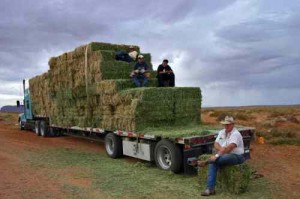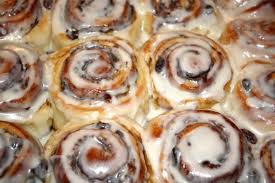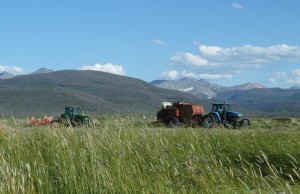The elk hide, which seemed to weigh the same as a fifty pound bag of grain, but about was slippery as the Coppertone baby’s bottom, got folded flesh side in, tumbled into a garbage bag and then heaved into the chest freezer, where it stayed frozen and impervious to bacteria. Weeks later I’d bring it to the tanners in Denver. This was not a leather shop, but a triple-wide storage unit, two thirds of which was stacked with heavily salted elk, deer, moose, goat and bear hides awaiting shipment. The owner sat happily grinning, enveloped in a reek of blood and fat that made me gag. As soon as I stepped out of the car, his hunting dogs approached, running in crazed circles around me, sniffing and licking their chops. Normally I’m very chummy with dogs, but given the amount of gory hide parts in the immediate vicinity, these were two canines for whom I would not squat down to let lick my face.

“Hey, how ya doin?!” the owner shouted as he recognized me, making me welcome even though I came only once a year. He waved a hand mucky with animal gore, globs of fat clinging to his fingernails, his hands so slimy that shaking one was out of the question. I waved back.
“Got your elk again, did ya?” he said, nodding and making celebratory noises over the obvious.
“Well, Bernard did,” I offered, not wanting to be mistaken for someone who would shoot an animal.
“Doin’ the same as last year?” was his rejoinder, an opening which required me to step inside his lair, where I would have to do the polite thing and spend a few minutes discussing the relative merits of tanning with hair on or hair off. I was fascinated by the whole enterprise of preserving animal skins, by the ghoulish heaps of hides stacked twenty high, each one slathered in a preserving layer of coarse salt. But the odor was so densely of warm blood and dead tissue, and the sight of his forearms slick and smeared with unspecified oleaginous material so retch-inducing, that it was all I could do to stand civilly in front of him. Flinging out a few relevant questions referring to how business was going, such as “Do you have more hides this year?” and “What are people bringing in?” I sidled toward the office side of the business, where I could stand in the open doorway gulping in buckets of fresh air.
As for the elk meat itself, The Joy struck me as sadly limited in its advice, though it did offer this: “Game shot in an unsuspecting moment is more tender….than game that is chased.” Anyone who imagined a man could catch up to a running elk and then be steady enough to fire a true shot, had either never seen an elk move, never hunted, or both. Besides, why would Bernard run when he could sit still and have the elk walk right by?

On the subject of aging, The Joy was silent. Despairing of finding much useful in it for my current culinary challenges I did what I never thought I would do: I banished it amongst the lesser cookbooks, squeezing it ignominiously between a muffin booklet and The Cooking of Southwest France. Through judicious questioning of neighbors who’d grown up hunting, we determined that elk, like beef, or geese for that matter, improved with aging. However, as with chile recipes, each person had a different length of time that they said was perfect. Though we wanted to eat some of Bernard’s first elk right away, we were advised to hang the carcass in the woods for a few days. That was an anxious time, as we envisioned coyotes and foxes feasting during the night, us returning to find a bedraggled carcass with chunks nipped out of it. The bigger problem, of course, were the flies who loved to lay their eggs in warm, moist, skinless flesh. To keep them out we draped the carcass in a white sheet, figuring that also might convince coyotes the carcass was actually the ghost of elks past.
We cut that first elk down a day early, and laid her lovingly in the pickup bed. Her pose was undignified, legs sticking straight up in the rictus of rigor mortis. I gingerly stroked the animal’s head, avoiding the reproachful stare of her mellow brown eyes. Still, I sat with her in the bed as the truck jounced over the dirt road to the highway, staring at the globs of congealed blood now streaking the pickup bed. I was both mortified and proud, saddened and hungry.
The man we delivered her to was our neighbor Bob, who ran the area campground and, more importantly, used to be butcher. He transformed that glorious animal into chunks wrapped in white butcher paper, each package stamped in red with “rib eye,” “tenderloin,” and “hamburger.” The legs sticking up from the pickup bed, the long lashes above staring eyes, these became a passing memory en route to a glorious meal. While Bernard carried the crates of wrapped meat to our car, Bob unfolded a square of paper towel and handed me two bloody teeth. “Elk ivories,” he said. “Each elk has only two of these. They’re real ivory. The rest are bone. Hollow. Which dry out like all those old bones you find in the fields. These will stay ivory-colored forever. People collect them and make jewelry from them. Thought you might like to have them.” Like? I was thrilled.

In exchange for Bob’s butchering services, we traded hunting rights. In years to come we used his walk-in cooler to hang our elk for ten days of aging. He’d drive to our north meadows with his wife any evening he wished, where they’d listen to the elk bugling. And once Bernard was done with hunting, he’d bring his rifle before dawn and hunt for an elk of his own.
That first year, 200 pounds of elk entered a freezer already stacked with 100 pounds of grass-fed beef from a neighbor’s cow, 75 pounds of lamb bought at the livestock sale to support one of our summer ranch hands, and another 75 pounds of pork representing a half side of hog raised by our farrier. Accustomed to buying a steak or two at a time, we’d been carried away with enthusiasm by the ready availability of good, pasture-raised meat. If Bernard and I each ate half a pound of meat every day for a year, we still would not be able to empty the freezer. And that’s without allowing for an occasional roast chicken, let alone some shrimp curry now and then.

No longer did we offer the bottle of wine that used to be our preferred hostess gift when invited out. Now Bernard and I entered friends’ homes laden with whatever package of meat we could grab. Elk sausage, thick-cut pork chops, lamb ribs and 95% lean chopped beef, decorated with a festive ribbon, graced freezers from Walden to Boulder, eliminating the awkward question about whether our hostess was expected to open and serve what we’d brought.
That first year I was intent on avoiding the failure of our first goose. Besides, what one can do with an inedible 15-pound bird didn’t extrapolate to two hundred pounds of elk. I’d heard about how tough elk was, how difficult it was to cook well. The Joy advised leaving well enough alone, cooking the elk pretty much au natural. I didn’t trust them. Singed by The Joy’s lack of assistance on goose matters, I bought in its stead a cookbook entitled Cooking Your Game, which instructed me to become a devotee of tenderizing marinades. The elk didn’t seem to benefit.
One day, in a hurry to get something on the table, I left off my usual concoction and we grilled an elk steak naked except for salt and pepper. And so we discovered that elk was delicious as is. My various tenderizing potions, and the book that advised them, went in the trash. The Joy returned to pride of place on my cookbook shelf, within easy reach for advice the next time a wild animal carcass confronted me on my kitchen counter.



























